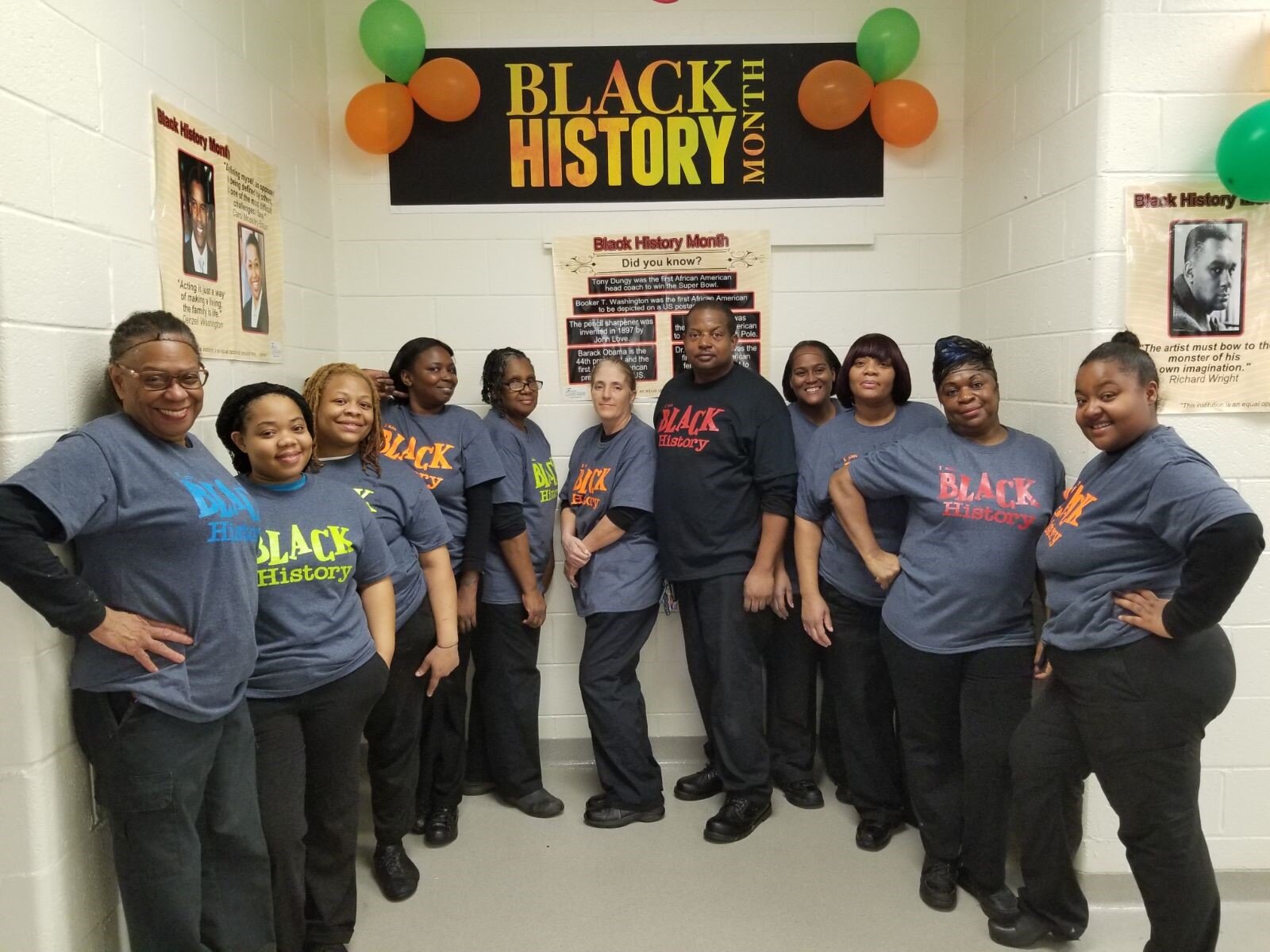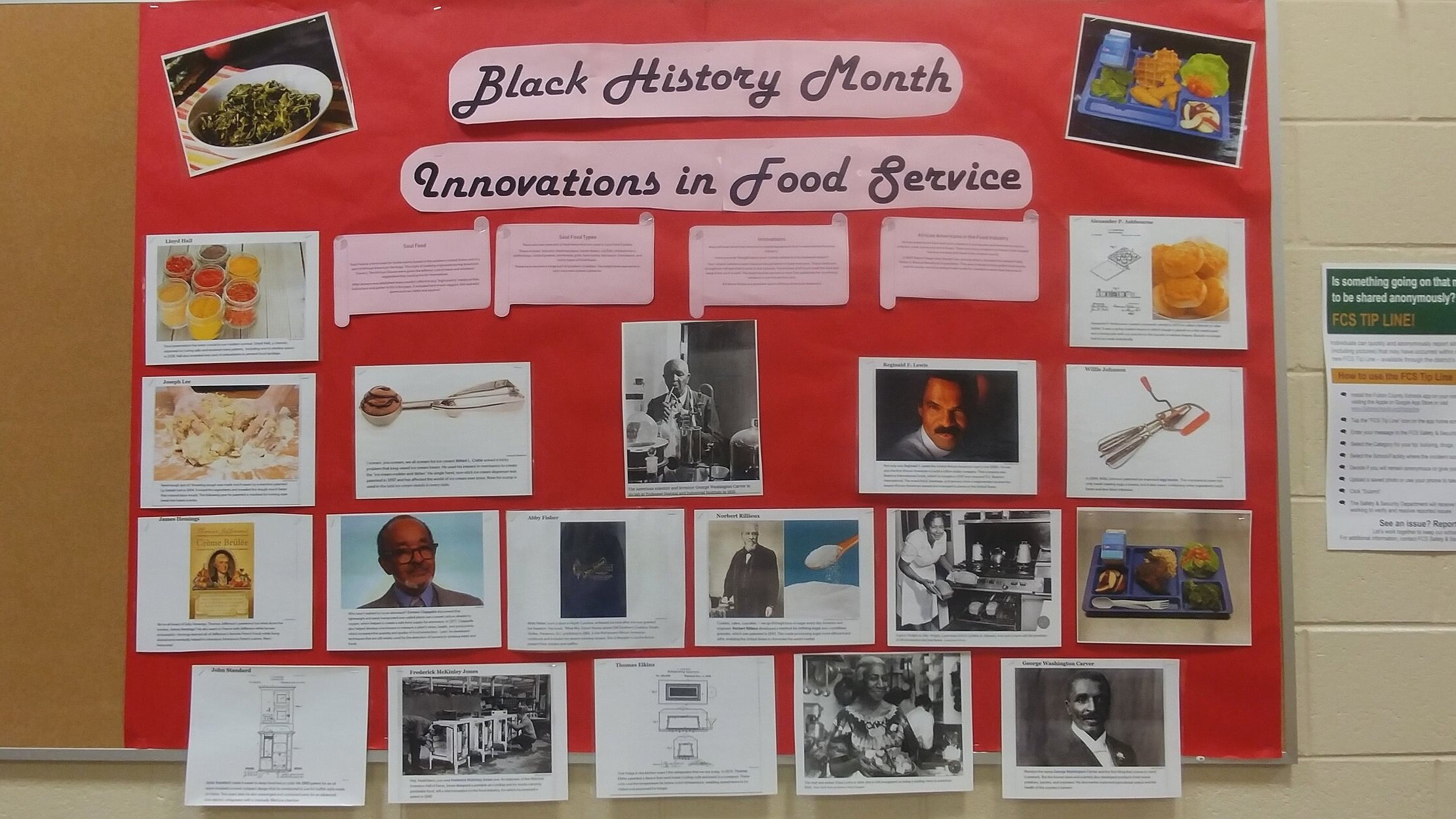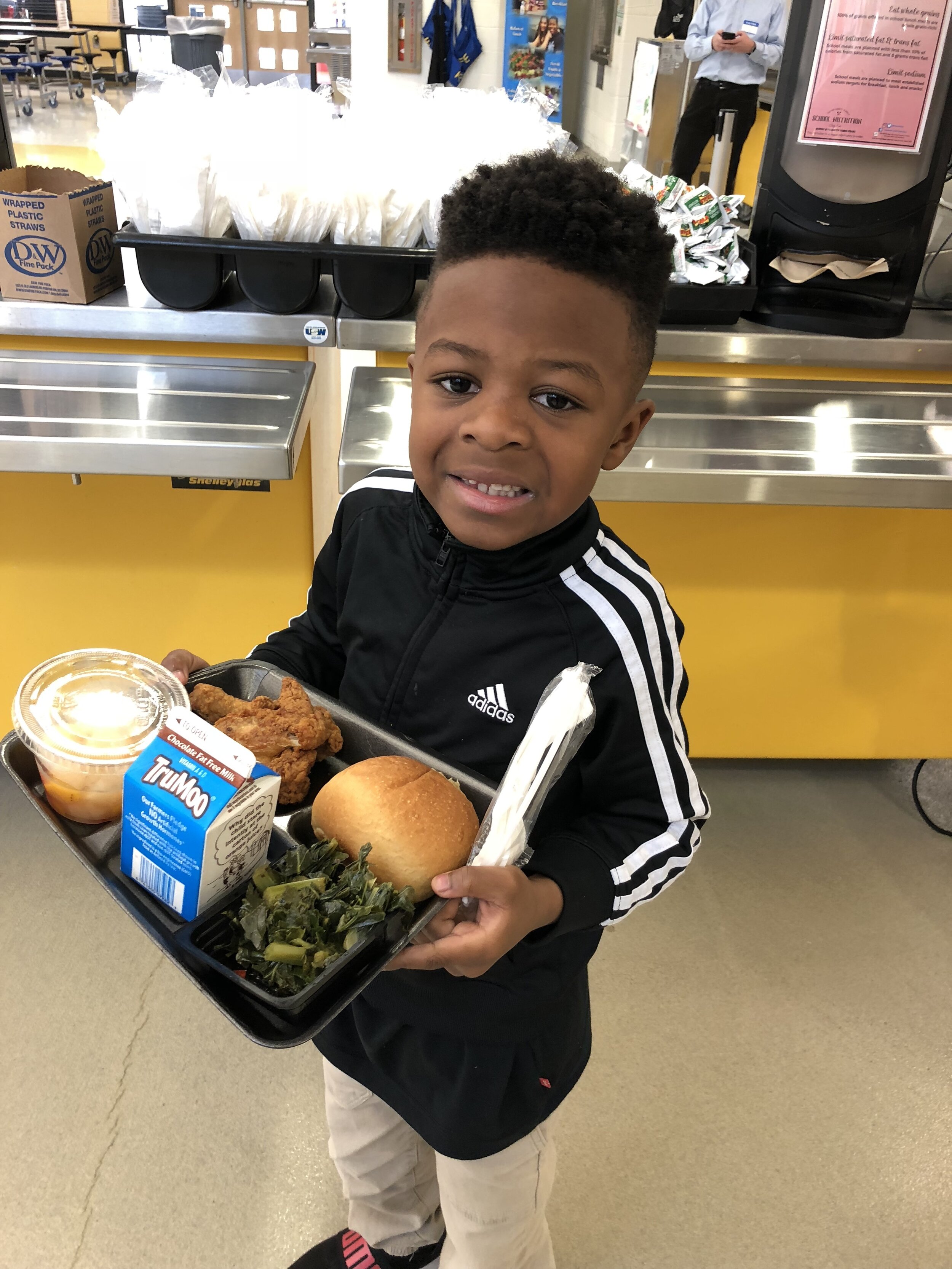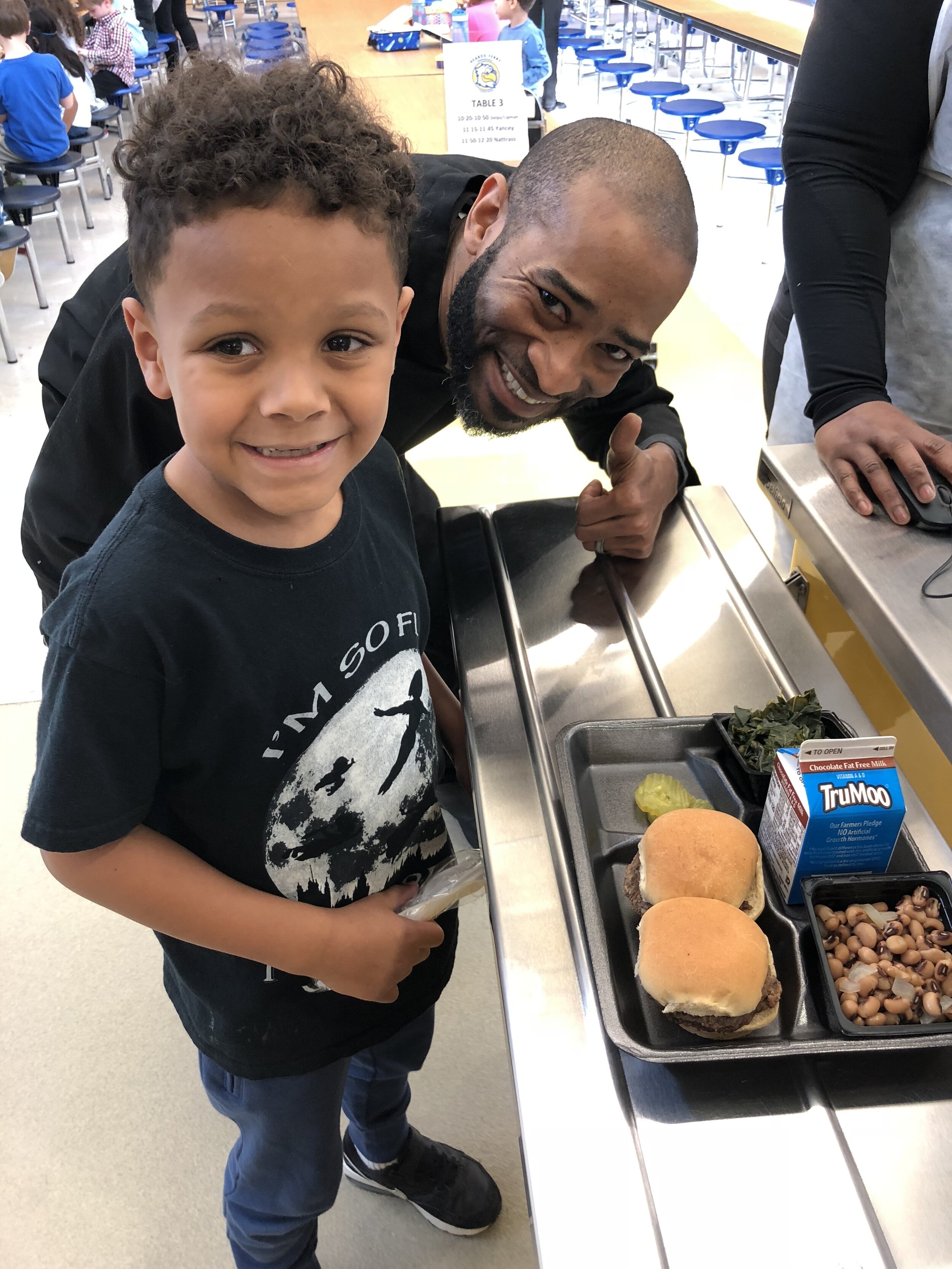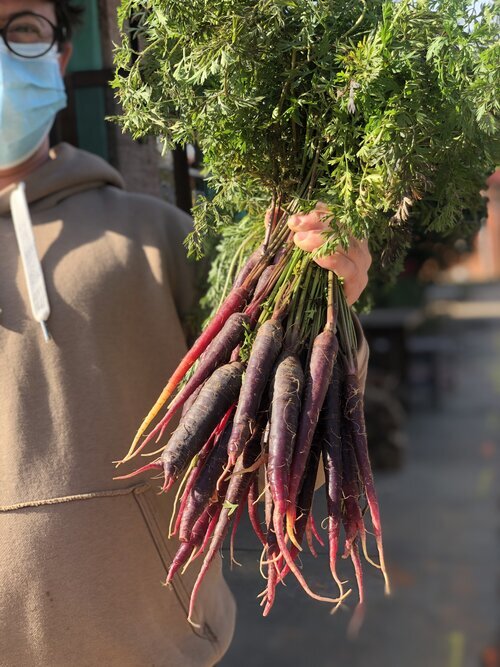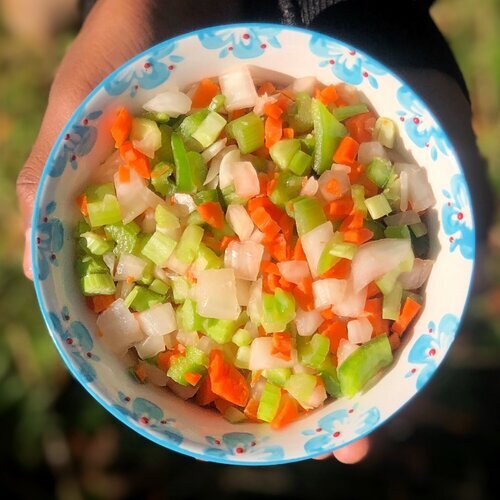By Kayla Williams
Are you a farmer that sells to farmers’ markets or have a CSA but are ready to get into the wholesale market, either to restaurants or institutions? Luckily, we have some tips for you! On Thursday, February 26th, Lauren Cox, Organic Procurement Coordinator at Georgia Organics along with Zac Harrison, owner of Fresh Harvest, and Neil Ringer, Director of Operations of The Common Market Southeast shared knowledge on what the processes look like to enter the wholesale market in Georgia in a variety of ways. Previously, Lauren managed Woodland Gardens, an organic mixed vegetable farm in the Athens-area that sells to many restaurants in Atlanta and Athens. At Georgia Organics, Lauren works closely with farmers to help them sell to larger institutions and restaurants, from helping them crop plan to organizing QuickBook trainings, improving their marketing skills and more. Lauren shared her knowledge about some pros and cons of selling to restaurants and larger wholesale markets in general, as well as best practices – we’ll share some here.
Whichever way you decide to “slice your pie”, your farm will become more resilient if you have multiple revenue streams. Maybe you attend one farmers’ market on the weekend, have CSA (community supported agriculture) pick up on Tuesdays, and deliver to restaurants in your closest larger city on Wednesdays. Or maybe, you sell to one large wholesale customer on Thursdays, delivery to restaurants on Fridays and do a CSA pick up on Saturdays, skipping farmers’ markets all together! You can choose how you slice your pie, but it’s important as you scale up, to add more revenue streams so you can be flexible as needed. So how do you choose?
Restaurant Walk-In. Photo credit: Bailey Garrot.
Although restaurants can be unreliable customers due to frequent menu and staff changes, you can usually get the best wholesale price available and because you are harvesting to order, you won’t have any leftovers. If you decide to sell to a larger wholesale customer, like grocery stores or distributors, you may have to settle for the lowest price point for your goods (as compared to the retail farmers’ market price) but the transactions may be more reliable working with a larger institution, and they may come pick up the products from your farm rather than delivering to a restaurant. It’s important to remember that the type of operation you run may be a better fit for some wholesale than others – if you are small and very diversified farm, you may be a better fit for a high-priced restaurant that uses smaller quantities of many products. If you are larger and specialize in (let’s say) tomatoes, you may be a better fit for a local pizza joint that makes huge quantities of sauce daily
Quick Cleaning Turnips. Photo credit: Lauren Cox,
. No matter which revenue streams you choose, recordkeeping is essential. From knowing where things are in the field, to making sure you have a consistent inventory for your customers, to knowing the prices each item sells for through your various streams, to telling your employees where to harvest what, recordkeeping can only make your life easier and more organized. How you harvest, package and clean your products also make a difference in the world of wholesale. Minimize handling your products because the more you touch it, the more degraded it gets, especially when wholesalers are aggregating, repackaging and redistributing. Cleanliness is key and minimizing moisture in washed greens, for example, extend the shelf life of your produce.
The Common Market, a non-profit aggregator and distributor, works with many institutions such as private schools, hospitals, universities, food service providers and municipal offices. The Common Market Southeast Headquarters are in East Point, GA but they also have a program based in Houston, TX and Philadelphia, PA. The Common Market wants to lower barriers and provide the infrastructure for local farmers to be able to sell to these institutions. The requirements for working with The Common Market Southeast are as follows: farmer must be in a 250 mile radius of their offices, must have sustainable growing practices, proof of liability insurance, be involved in a food safety program, and have a post-harvesting handling and packing system. Additionally, you must pack your products in wax boxes with your contact information on the label. During COVID-19, The Common Market Southeast received a USDA grant that allowed them to deliver over 96,440 boxes to families across the state, partnering with over 45 community organizations and purchasing over 964,000 pounds of local food purchased and distributed. Their systems and infrastructure made that work possible. A big thanks to Neil Ringer and Common Market for sharing with us and doing incredible work every day to make it easier for local producers to be involved in larger institutions!
West Georgia Farmers Coorperative Delivering to Miller Union. Photo Credit: Bailey Garrot.
Fresh Harvest, on the other hand, is solely residential. Each week, Zac Harrison texts all the farmers in the Fresh Harvest network (some big, some small, but all organic) and finds out what their availability is for the week. Based on which farmer has what products, he compiles weekly boxes that are delivered to homes around Atlanta. In addition to a weekly produce box, customers can add on other local goods, like local dairy, eggs, meat, prepared foods and more. Fresh Harvest’s offices are in Clarkston, GA and they employee many refugees that are based in Clarkston. Zac’s goal is to expand the reach and sale of the farmer, not to infringe on their other revenue streams and he wants to crop plan with farmers at the beginning of the season, so they can be guaranteed a revenue stream from Fresh Harvest.
No matter which route you decide to go down for slicing your pie, utilizing the tips from Lauren and working with folks like Neil and Zac who have the farmers’ best interest at heart, choosing to diversify your revenue streams can only make your farm more successful and resilient.
Interested in learning more about Lauren’s work? Check out farmtorestaurant.georgiaorganics.org/, follow Georgia Organics on Instagram @georgiaorganics, and Facebook at facebook.com/GeorgiaOrganics/.
Want to see if The Common Market may be a good fit for you or support their work? Check out thecommonmarket.org, follow them on Instagram at @commonmarketse and Facebook at facebook.com/thecommonmarketse.
Ready to work with Fresh Harvest or purchase a box? Visit them at freshharvestga.com/, follow them on Instagram at @freshharvest and Facebook at .facebook.com/freshharvestga.
































